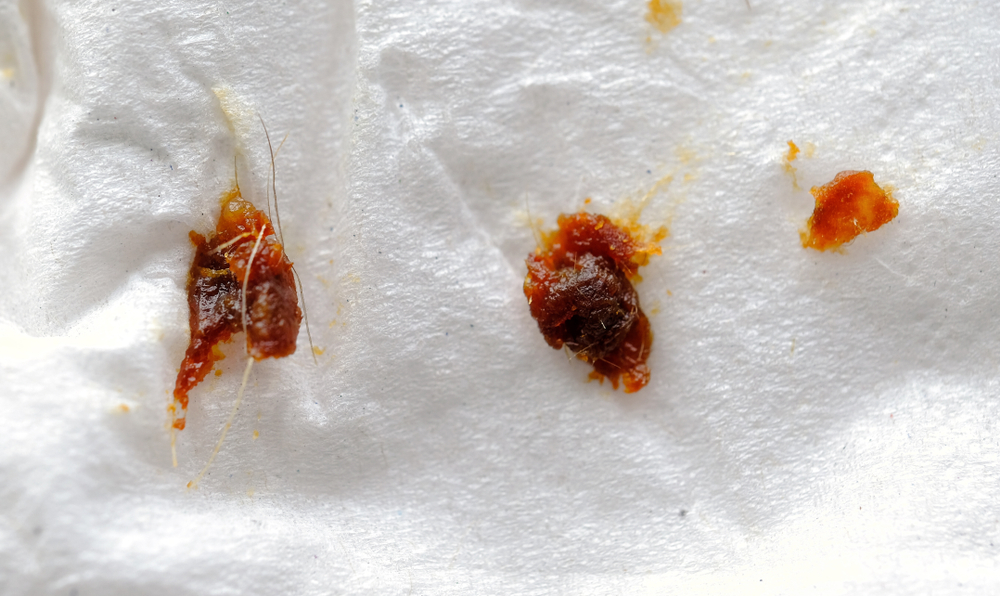When it comes to personal health, earwax rarely makes the conversation. However, this substance, called cerumen, is still surrounded by many myths regarding proper management and removal.
Earwax is a natural and necessary part of our well-being, but oftentimes, these myths promote counterproductive measures to manage this substance. In this article, we’ll debunk these common misconceptions to ensure your ears are clean and healthy!

Debunking the 6 Common Myths of Earwax
With many dangerous myths surrounding the best practices, it’s important to discern fiction from reality. While the list of misconceptions is quite long, the following myths are the most common and harmful for your ear health:
- Earwax is a Sign of Uncleanliness
- Cotton Swabs are Safe & Effective
- Too Much Earwax is a Health Concern
- All Earwax is the Same
- Ear Candles are Safe
- Earwax Causes Permanent Hearing Loss
Myth #1: Earwax Is a Sign of Uncleanliness
Earwax is produced to capture debris and clean your inner ear, so the brown or yellow appearance is completely natural. In fact, it indicates that your ears are working properly, keeping them clean and healthy. While it certainly isn’t pretty, earwax is far from a sign of uncleanliness.
Myth #2: Cotton Swabs Are Safe & Effective
Your ears are self cleaning – thanks to earwax. By inserting foreign objects, like cotton swabs, you’re more likely to push earwax further in. Instead of cleaning your ears, this will typically cause blockages or damage, so it’s best to avoid at-home methods. If your earwax is bothersome, and requires additional cleaning, see a specialist to ensure safe removal.
Myth #3: Too Much Earwax Is a Health Concern
Your ears will produce as much earwax as needed to protect your inner ear from dirt, dust and other debris. Because of this, some people will experience more earwax than others, but this is rarely a cause of concern. However, if you experience a blockage or discomfort, it’s advisable to seek professional help.
Myth #4: All Earwax Is the Same
The idea that all earwax is the same is a common misconception. In reality, earwax will vary in color and consistency based on your age, diet, environment and hygiene practices. For example, earwax tends to be darker when it traps more debris – a sign your ears are functioning properly. Similarly, as people age, their earwax becomes drier and flakier.
Myth #5: Ear Candles Are Safe
The use of ear candles, also called ear coning, has become a common practice for ear cleaning. However, this practice is both ineffective and potentially dangerous. There is no scientific evidence that ear candles are an effective method of cleaning, but there is significant evidence of a high risk of injury due to the hot wax.
Myth #6: Earwax Causes Permanent Hearing Loss
Excessive earwax can cause temporary hearing loss due to the blockage, but this is not permanent. Earwax naturally moves out of the ear, so blockages are often temporary. However, if you experience a long-term blockage, it’s important to get a hearing evaluation instead of risking further damage through at-home methods.
Understanding the Facts about Earwax
As you can see, earwax is more than an inconspicuous substance; it plays a critical role in our personal hygiene. Misunderstandings about earwax can lead to harmful practices, so let’s recap the key facts to better understand its function and the importance of proper care.
- Earwax is protective: Earwax serves as a natural barrier, preventing dust, dirt and debris from entering and damaging your ear canal. It also has antibacterial properties, protecting the ears from infections.
- Self-cleaning Mechanism: Your ears have a natural self-cleaning mechanism. Jaw movements, like chewing and talking, help move excess earwax out of the canal, where it typically dries up and falls out.
- Healthy Variation: The color and texture of earwax will vary greatly from person to person, influenced by genetics, diet and environment. These variations are normal and typically not a cause for concern.
- Effective Removal: Using cotton swabs, ear candling, or any other foreign substance can be dangerous and, more often than not, ineffective. If you experience discomfort, get in touch with an expert for safe and effective removal.
Remember, our ears are an integral part of our personal health. If you face discomfort or blockages, it’s crucial to approach with caution. But, how exactly do you do that?
Removing Your Earwax at Home
While cotton swabs and ear candling are unsafe and ineffective, some at-home methods can still provide relief from discomfort or blockages. Keep in mind, the safest method is to seek professional assistance.
If you prefer a DIY approach, you can put a few drops of plain water, saline solution, or hydrogen peroxide on a cotton ball. Then, put the cotton ball in your ear and tilt your head so that your ear is pointing up. Allow gravity to pull the fluid into your earwax for about a minute, then tilt your head the other direction and let the fluid and wax drain out.
This method allows earwax to naturally drain, avoiding the risks of inserting foreign objects. However, excessive or incorrect application can still lead to earwax impaction, irritation, or even infection. So, if your discomfort persists, you should visit a specialist to ensure effective earwax removal.
Getting Started with Proper Earwax Removal
When it comes to your ear health, safety and efficiency is key. This is where the expertise of Hearing Associates of Los Angeles becomes invaluable.
Attempting to remove earwax at home, whether through cotton swabs or candling, can lead to complications such as impaction, infection, or even damage to the ear canal and eardrum. Our experts employ safe, medically-proven solutions to ensure the safe and effective removal of excess earwax. Give us a call at 702-857-8188 or visit our contact page to get started!




Leave a Reply